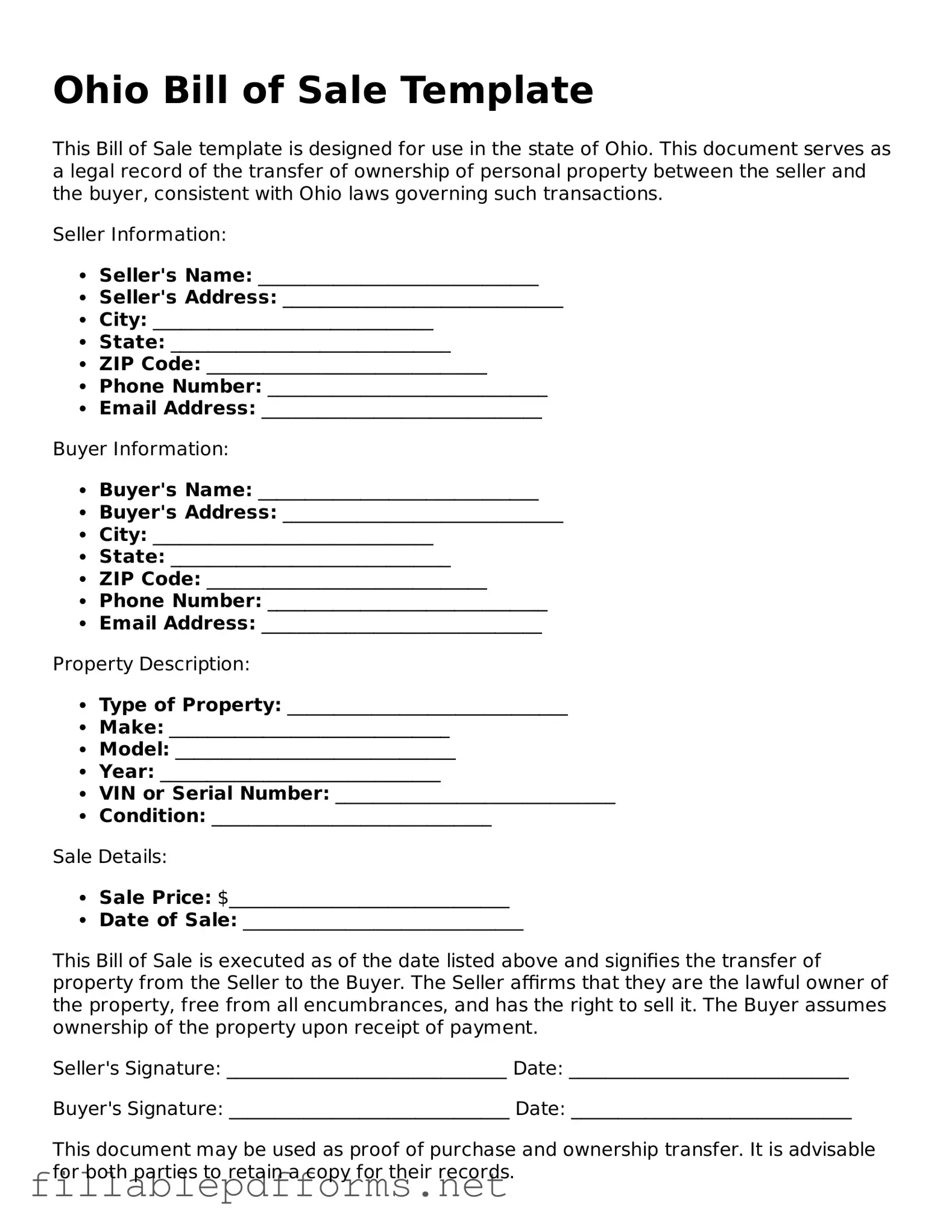Attorney-Verified Bill of Sale Form for Ohio State
The Ohio Bill of Sale form is a legal document that serves as proof of the transfer of ownership of personal property from one individual to another. This form is essential for both buyers and sellers, as it provides a record of the transaction and details about the item being sold. Understanding its components can help ensure a smooth exchange and protect the interests of both parties involved.
Launch Editor Here
